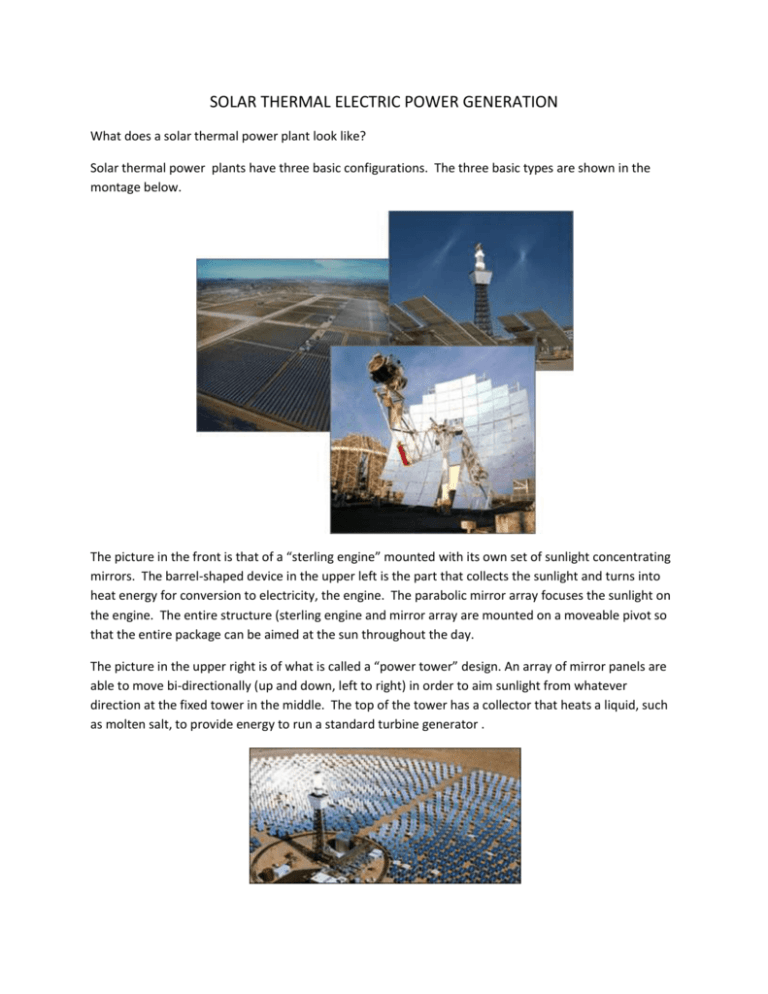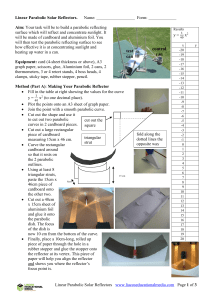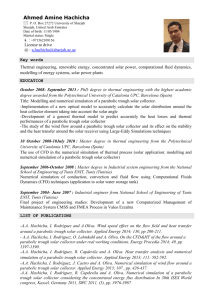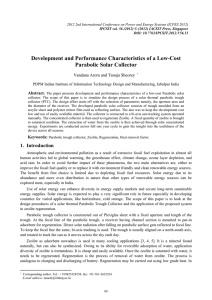What does a solar thermal power plant look like
advertisement

SOLAR THERMAL ELECTRIC POWER GENERATION What does a solar thermal power plant look like? Solar thermal power plants have three basic configurations. The three basic types are shown in the montage below. The picture in the front is that of a “sterling engine” mounted with its own set of sunlight concentrating mirrors. The barrel-shaped device in the upper left is the part that collects the sunlight and turns into heat energy for conversion to electricity, the engine. The parabolic mirror array focuses the sunlight on the engine. The entire structure (sterling engine and mirror array are mounted on a moveable pivot so that the entire package can be aimed at the sun throughout the day. The picture in the upper right is of what is called a “power tower” design. An array of mirror panels are able to move bi-directionally (up and down, left to right) in order to aim sunlight from whatever direction at the fixed tower in the middle. The top of the tower has a collector that heats a liquid, such as molten salt, to provide energy to run a standard turbine generator . The picture in the upper left of the montage shows a linear reflector array, in this case a parabolic trough that focuses sunlight on a small linear collector pipe filled with molten salt. Each row has its own collector pipe. All the rows are joined together to gather the heat energy to drive a standard steam generator. The linear reflector array form of solar thermal is the most widely used at this point in the technology’s development. There are fundamentally two types of linear reflector arrays; the parabolic dish and the compact linear Fresnel reflector. Each are pictured below. Parabolic Trough Array The picture following shows the parabolic reflector itself and the collector pipe. The trough pivots at the center of the parabolic curve, with the collector pipe moving with the array to keep the sun focused on it. Normally the parabolic array is oriented north-south, with the rotation of the trough allowing the collector to pick up the sun’s heat from sunup to sundown. Compact Linear Fresnel Reflector The Compact linear Fresnel reflector (CLFR)array is similar to the parabolic trough except that the collector is located 30 feet or so above the reflectors. This style allows the collector to remain fixed and only the individual reflectors move. With a dozen or so reflectors for each collector, the individual reflectors will have differing angles with respect to the sun and the collector in order to focus the sun’s heat on the collector. The picture below shows a CLFR array with 12 reflectors focusing on one collector, which is about 160 feet long.










